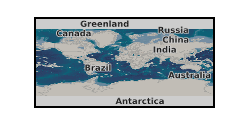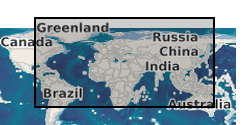Palaeoceanography
Type of resources
Topics
Keywords
Contact for the resource
Provided by
Years
Formats
Representation types
Update frequencies
-

Neodymium (Nd) isotope data measured from fossil fish debris and sediment leaches collected from IODP Sites U1512, U1513, U1514 and U1516.
-

Published paper associated with NERC grant NE/F011091/1. Price, G.D., Twitchett, R.J., Wheeley, J.R., Buono, G. 2013. Isotopic evidence for long term warmth in the Mesozoic. Scientific Reports, 3, 1438. doi: 10.1038/srep01438
-

We used existing coretop samples from several sites from the Atlantic, Arctic, Pacific, and Indian Oceans (Fig. 1 and Table S1) to test the relationship between Mg/Ca ratios and D47 values in modern foraminifera. In the North Atlantic the cores were the same as those used previously by Elderfield and Ganssen (2000) (Tables S1 and S2). Coretops with the potential to yield large (>5 mg) mono-specific samples of foraminifera were selected from the >300 lm size fraction of the sediment except for Neogloboquadrina pachyderma (sinistral) where the >150 lm size fraction was chosen to obtain sufficient material. After cleaning the samples consisted of _3 mg of foraminiferal calcite and included 8 different species of surface- and deepdwelling planktonic foraminifera: Globigerina bulloides, Globigerinoides sacculifer, Globorotalia hirsuta, Globorotalia inflata, Globorotalia menardii, Neogloboquadrina dutertrei, Neogloboquadrina pachyderma (s), and Orbulina universa. The Godwin Laboratory clumped isotope calibration (i.e., the regression between D47 and temperature) was established using natural cave carbonates that precipitated subaqueously at known temperatures, ranging from 3 to 47ºC (Table 1, Fig. 2). These carbonates grew under conditions that minimize CO2-degassing and evaporation and hence kinetic fractionation effects are negligible owing to an unlimited DIC pool in the water (Kele et al., 2015). All samples consist of calcite, except NAICA-1 which is aragonite.
 BGS Data Catalogue
BGS Data Catalogue